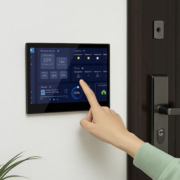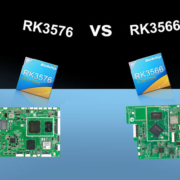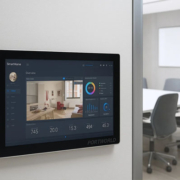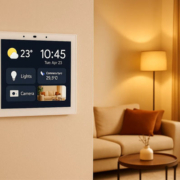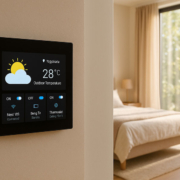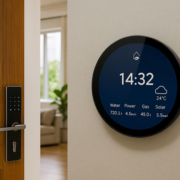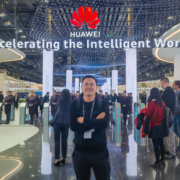Understanding PoE Power Types: The Evolution from Type 1 to Type 4
In today’s era of smart systems and connected environments, Power over Ethernet (PoE) technology has revolutionized how we power and connect devices.
By delivering both power and data through a single Ethernet cable, PoE simplifies installation, reduces costs, and enables flexible deployment of smart devices across homes, offices, and industrial settings.
Within the PoE ecosystem, four main standards — Type 1 to Type 4 — define how much power can be delivered to network devices. This article explains each type, highlighting their characteristics, differences, and typical applications.
Overview of PoE Standards
| Feature | Type 1 | Type 2 | Type 3 | Type 4 |
|---|---|---|---|---|
| Name | PoE | PoE+ | PoE++ / UPoE | High Power PoE |
| Standard | IEEE 802.3af | IEEE 802.3at | IEEE 802.3bt | IEEE 802.3bt |
| Max Power per Port (PSE) | 15.4W | 30W | 60W | 100W |
| Power to PD | 12.95W | 25.5W | 51W | 71.3W |
| Twisted Pairs Used | 2 pairs | 2 pairs | 4 pairs | 4 pairs |
| Supported Cables | Cat5e | Cat5e | Cat6A | Cat6A |
| Typical Applications | IP Phone | Video Phone | Managed Devices | LED Lighting, High-Power Systems |
1. The Basics of Power over Ethernet (PoE)
PoE enables both electrical power and data to be transmitted through the same Ethernet cable.
This eliminates the need for separate power wiring, greatly simplifying installation and maintenance.
A PoE system consists of two main components:
- PSE (Power Sourcing Equipment): the device that supplies power, such as a PoE switch or injector.
- PD (Powered Device): the device that receives power, such as an IP phone, security camera, or smart control panel.
2. The Four PoE Types Explained
Type 1 – IEEE 802.3af (Standard PoE)
- Power Output: 15.4W (12.95W available to PD)
- Typical Applications: IP phones, access points, small smart panels
- Overview: The original PoE standard, ideal for low-power devices and basic smart building installations.
Type 2 – IEEE 802.3at (PoE+)
- Power Output: 30W (25.5W to PD)
- Typical Applications: Video phones, dual-band Wi-Fi routers, advanced IP cameras
- Overview: Offers higher power delivery, suitable for mid-range devices that require more energy.
Type 3 – IEEE 802.3bt (PoE++ / UPoE)
- Power Output: 60W (51W to PD)
- Typical Applications: Multi-antenna access points, video conferencing systems, smart management devices
- Overview: Utilizes all four twisted pairs for power and data transmission, enabling greater power capacity.
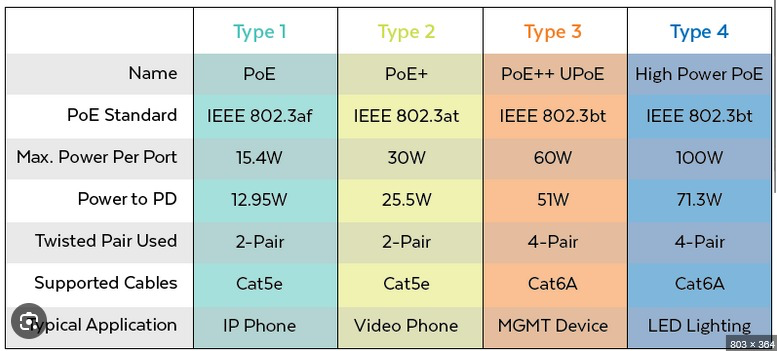
POE TABLETS
Type 4 – IEEE 802.3bt (High Power PoE)
-
Power Output: Up to 100W (71.3W to PD)
-
Typical Applications: LED lighting, digital signage, industrial automation systems
-
Overview: Supports high-power applications, ideal for advanced smart buildings and IoT infrastructures.
3. Technical Considerations: Compatibility and Performance
-
Backward Compatibility
Higher-class PSEs (e.g., Type 3 or Type 4 PoE switches) are backward compatible with lower-type PDs, allowing for flexible upgrades and mixed-device environments. -
Cable Quality Matters
As power levels increase, so does the importance of high-quality cabling. Type 3 and Type 4 PoE typically require Cat6A cables to minimize loss and heat buildup. -
Safety and Energy Efficiency
PoE standards include built-in detection and negotiation protocols, ensuring that only PoE-compliant devices receive power — protecting both devices and network infrastructure.
4. Real-World Applications and Trends
With the rise of IoT, smart buildings, and industrial automation, PoE applications are rapidly expanding beyond traditional networking:
- Smart Buildings: Unified power and control for lighting, HVAC, and sensors.
- Modern Offices: Simplified wiring for meeting room systems, displays, and telepresence devices.
- Industrial Environments: High-power PoE (Type 4) supports robotics, automation, and environmental monitoring systems.
The Future of PoE is Smart and Scalable
The evolution of PoE from Type 1 to Type 4 reflects a shift from powering small office devices to energizing large-scale smart infrastructure.
With IEEE 802.3bt (High Power PoE), the technology now supports a new generation of intelligent, energy-efficient, and easy-to-manage devices — all powered through a single Ethernet line.
PoE is not just about delivering power — it’s about delivering simplicity, scalability, and intelligence for the connected world.


